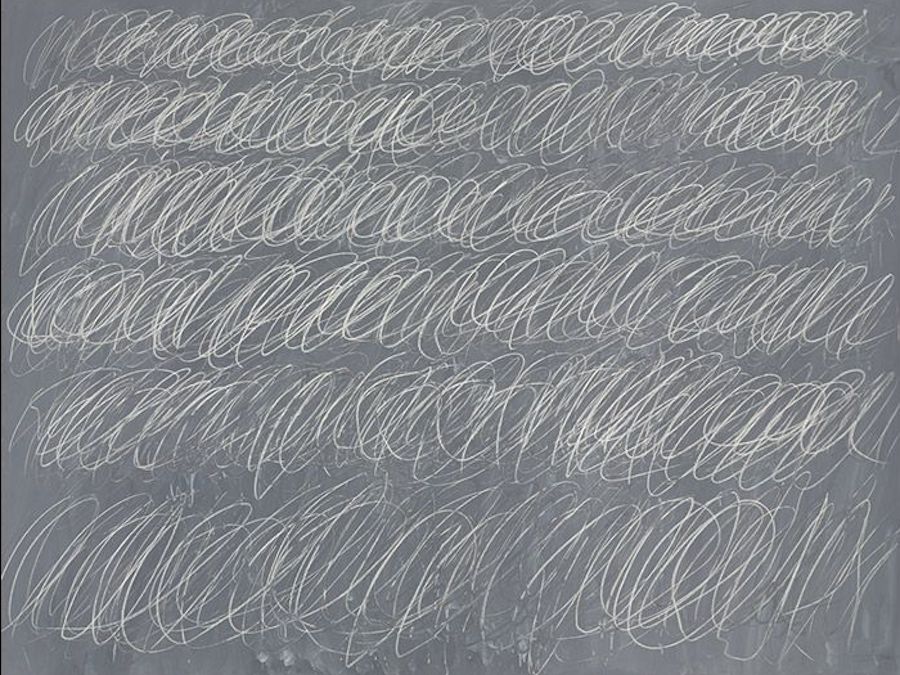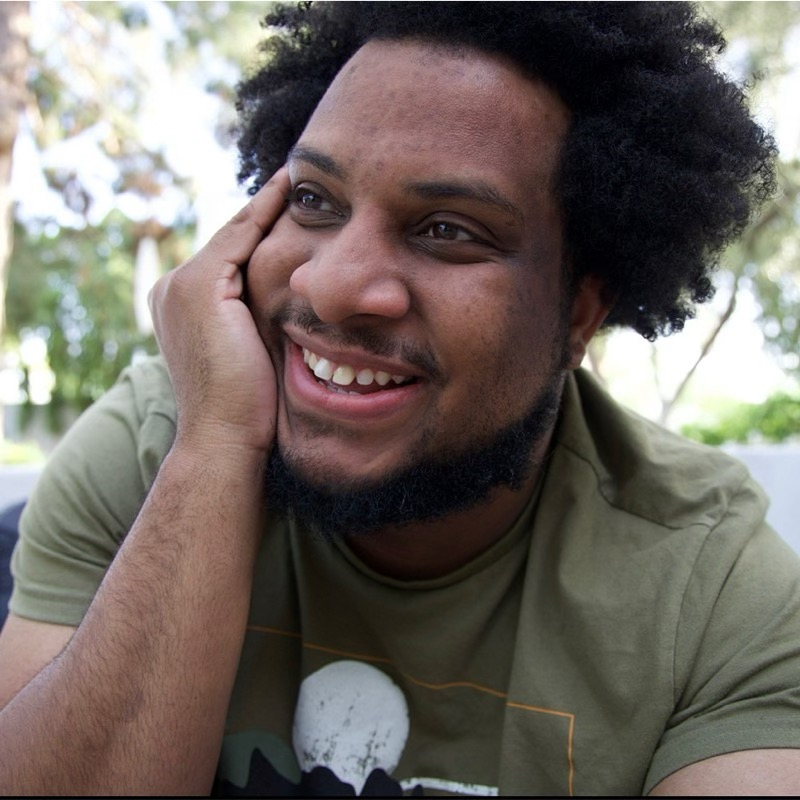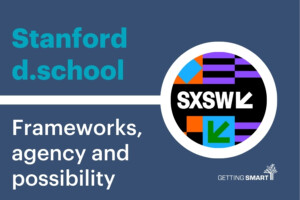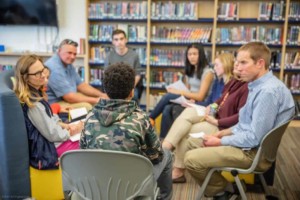Building An Authentic Learning Culture Starts With Imperfection and Vulnerability
Key Points
-
Failure can feel like a brick wall or it can feel like a turn in the road. It’s crucial to get students familiar with the pivot.
-
Helping learners feel like they belong is a lot of work, but it has to start with you.

I once shared Cy Twombly’s painting, “A blackboard covered in white scribbles” with a group of 6th graders. I asked them for their immediate thoughts on the work.
“Ummm I could do that right now!”
“Looks like a messy”
“Looks like I’m going to be famous!”
“This looks like a kid did it.”
“A whole mess!”
The word “mess” kept being hurled into the air in the direction of this painting. Then I told them how much it sold for. $70.5 million.
“Your mess can be worth millions,” I told them. This conversation fundamentally altered the culture of my classroom. “Cy Time” became a period of class where students would try new things because of the example that this conversation set for them.
In direct contrast to this line of thinking is something that rots at the root of our current model of education. We call it many names so that it can hide in plain sight. Some might call it rigor or standards, high achievement, rubrics, grading scales, behavior charts or even classroom management. None of these are bad things on their own, however, you will often find that the core of any of these is perfectionism.
Perfectionism often sounds like: “Raise your hand to speak”, “don’t talk out of turn”, “the bell doesn’t dismiss you, I dismiss you”, “get on the all A’s honor roll”, “don’t miss class”, “balance your sports with your academics”, and on and on and on. This litany of demands becomes a dangerous culture that can crush a student under its weight, creating a lack of trust and belonging in schools and classrooms and punishing students for courageously seeking classes/experiences that may challenge and expand them.
In this blog, we’ll highlight pedagogy that allows for imperfect work to be shared and we’ll share how you can create a culture of sharing invisible learning so that there isn’t just one teacher in your classroom but a room full of teachers.
How to Ditch a Culture of Perfectionism
It’s hard to buck the system, but we’ve got you. To start, focus on your own personal classroom culture and create concrete tools and strategies you can use in your classroom tomorrow… after you’ve read this and shared it with everyone you know.
Building a Classroom Culture Without Perfectionism
The bulk of culture building comes from both the words of a leader and the actions that follow those words. This is to say that as the person typically facilitating learning you have to be willing to think differently about what you say, why you say it, and what it means to follow through.
- Start with identity to get to a place where we know each other and feel comfortable sharing imperfect work. A great starting place is understanding which aspects of your identity make you powerful, and a great resource is a talk Mike gave on how he’s used the work of Lisa Delpit and Peggy McIntosh to do this when he was in the classroom.
- If you’re not ready to get rid of traditional grades yet, create some set of assignments, projects or time when students are producing something that should be evaluated but for which there is no final “grade.” Create a Capstone program that book-ends high school, middle school, elementary, or all three.
- Think about who does the evaluating, and ask yourself if the stakes are higher when you, the teacher, evaluate work or when their peers do. Here is a good hub for peer-to-peer learning but for a great one remix this and make it your own.
- Don’t just model the learning, be in it with your students. Doing this will let you demonstrate what sharing early (even imperfect work) and often looks like, and It gives you a chance to be the tide that rises the boats of your classroom. Here is a great guide on how.
- Teach the lesson that we move forward together. This means in your planning you’re thinking intentionally about designing experiences where students need to lean on their peers and the collective to complete the assignment.
- Create a lower threshold for failure. Treat failure as a part of the learning process by teaching students how to pivot. This might mean you don’t grade every assignment or that you evaluate their ability to make a meaningful pivot instead of the work.
Assignments and Pedagogy That Allow Imperfect Work to be Shared
- Make student growth visible with process documentation and then give your learners the ability and time to look at each other’s evidence and reflections. This is learner-led documentation
- Make your classroom transparent when working on big projects and don’t be the gatekeeper. It’s vital that the whole class has an understanding of where each learner is the life cycle of a project. This can be done through micro check-ins that are shared and celebrated.
- Create a system of visible learning. A great tactic for this is to pull from agile project management and have student-led scrums in class once a week.
- Build into your schedule multiple celebrations of learning presentations, these can be in person or virtually.
- Student led teach-ins can be a great option; this is when you create an opportunity for students to teach content to each other and get feedback from one other. Break students into groups, have roles like teacher, learner and coach where students take turns fulfilling each role.
- When you create a culture of sharing invisible learning, there isn’t one teacher. The room becomes the teacher and the classroom becomes the collective. Have your students become SMEs for each other.
- Ditch the archaic (and most likely GenAI written) giant research paper and replace with portfolios that highlight both product and process.
Two Experiences of Perfectionism
“How’d you do?”
I’ll never forget the day I was dumbfounded by someone else’s grade on a math test. My 9th grade Algebra teacher always handed tests back folded hot dog style. She thought she was slick. She didn’t want anyone to know how they did based on how she returned their test. We’d just taken what she heralded as her most difficult Algebra II test, and were about to see how we stacked up. I looked over to my table partner who was covered in sweat, I remained unphased.
The teacher slid my test across the table, then placed my neighbor’s test face down. We both glanced at each other and flipped our tests over at the same time. “Boom!” I got an 89 on the “hardest test of the year.” In my excitement, I looked over and saw my classmate in tears. “Grace, you alright? How’d you do?”
“I got a 92.” She said, through tears.
I was confused beyond my 9th-grade understanding. Crying like your dog just died over a 92? She then begged the teacher to let her retake the test so she could make above a 96 because of some requirement for the National Honor Society.
The funny thing is, years later, I saw those same tears from students of mine over the difference between a 98 and a 100. See, my table partner and my future students were not in tears over how well they’d done on difficult assignments. They were in tears because they’d swung for the strawman of perfection and missed.
Perfectionism in school harms learners who are getting a 96 and those getting a 65. Fundamentally, it harms authentic relationships to learning and each other. – Mike
Between You and the Rubric
The grade is the carrot and the stick. It is the motivation, the reason for hard work and grit. All of my work in education has been to challenge this power structure and to help learners to understand their own power through meaningful and personal products and artifacts. Although well-intentioned, I was met with an unexpected response: “Why are you giving me choice, time, and space in this one class when I have little in almost every other class I take? Tell me what to do, tell me what my project should be like.” For them this was whiplash. Perfectionism had colonized them to be passive in their learning. They had selected classes that they knew they would ace and created projects where there was little uncertainty or real challenge.
One student, Ry Bleckel, helped me to create a program that fought against perfectionism. Ry’s senior capstone project was about creating, and teaching people how to create an album. His project was about empowering youth to understand both the software and the “heartware” of making music. He’d never performed in front of people in a formal setting but we pushed him to perform during his mid-year presentation. He was afraid to do it, but the night before he decided to pivot and show the unfinished, imperfect version of his performance and album. Though we instructed students to use Google Slides and pull from Slide Carnival templates he did it from keynote and in his own brilliant and minimalist style. It took him longer and more work than the others. Through this, you saw who he was, his aesthetic and his identity. This was especially apparent in the gaps between his product and the rubric. – Aaron
In Conclusion
The Classroom becomes a Collective. When the goal isn’t the grade, the process of learning becomes more important than the destination. When students (and teachers) understand that all work can be seen as a step along the journey of growth, it becomes much easier for them to cheer each other on, pick each other up when they fall and be in flow together toward growth.
Students become familiar with the pivot. Failure can feel like a brick wall or it can feel like a turn in the road. When learning means you have to be perfect, every failure hurts because you run full speed into a brick wall that demands you go back and start running again until you break through the wall. When learning isn’t about being perfect students learn how to pivot early and often — what was once a wall is now a fork.
Then you get a real portfolio of work. You know you’re on the right track regarding your classroom culture when you find your students having a larger and larger portfolio of real work to show for being in your classroom. Your idea of what a portfolio is will change as you seek to ditch the perfectionism in your classroom culture. Imagine a student being able to document the 4 attempts or methods they used that didn’t work to show how they arrived at the attempt or method that finally did work.
Dr. Betina Love states, “Who cares if we graduate students with 4.7 GPA’s if they’ve come out of school traumatized and with little confidence.” Perfectionism creates a culture in schools that is deeply individualistic and lonely. It creates structures that ensure that learners are passive, where school is done to them. It kills the soul of learning and creates inauthentic relationships rooted in power and punishment. We urge you to fight this ethos of perfectionism tooth and nail, with culture and pedagogy. Whether you’re an administrator, teacher, parent, or student: to prepare for the real world; do real and imperfect work, and document the hell out of it.

Aaron Schorn








0 Comments
Leave a Comment
Your email address will not be published. All fields are required.